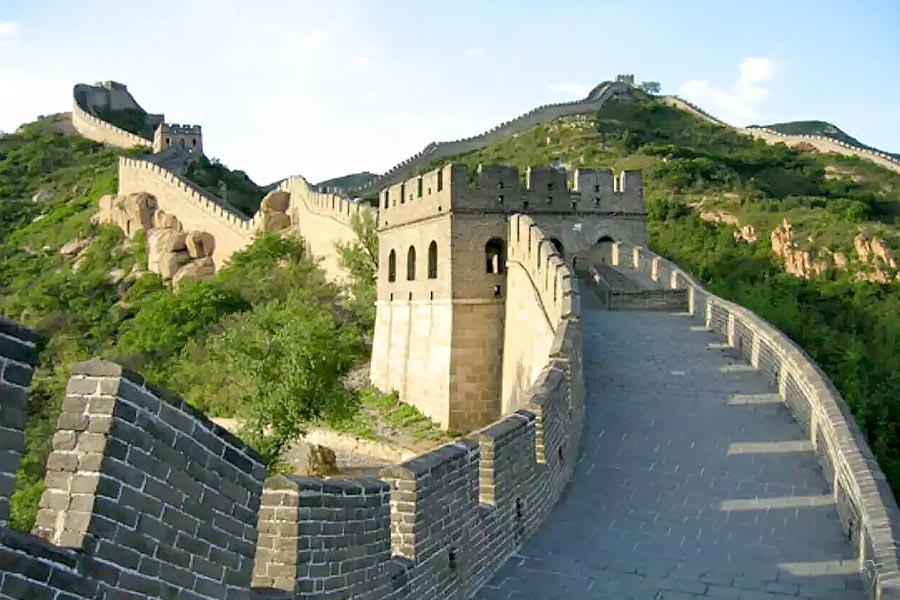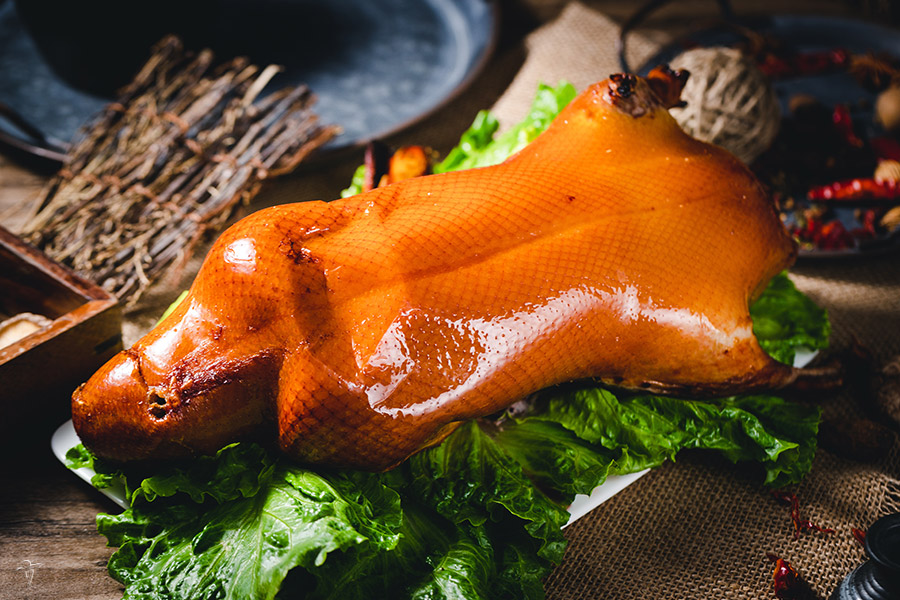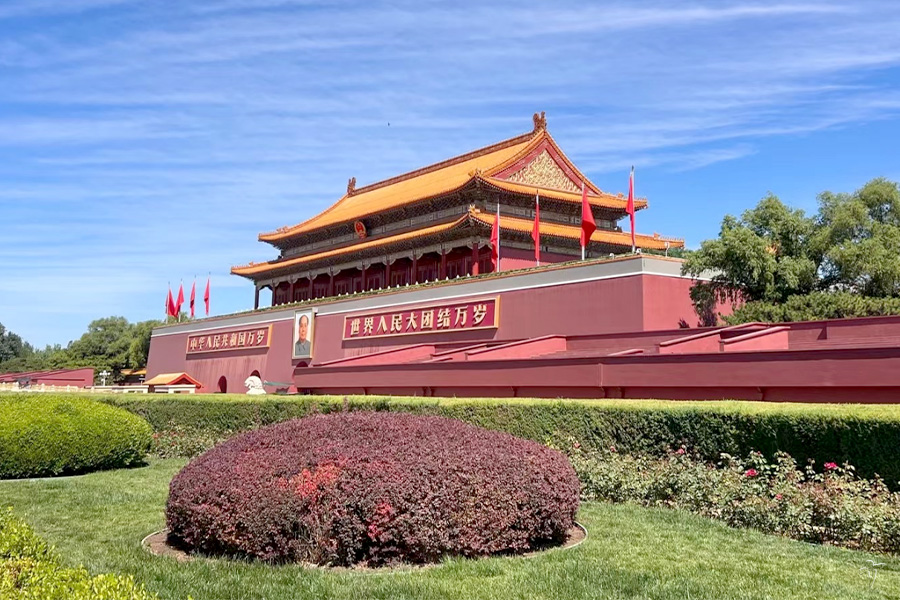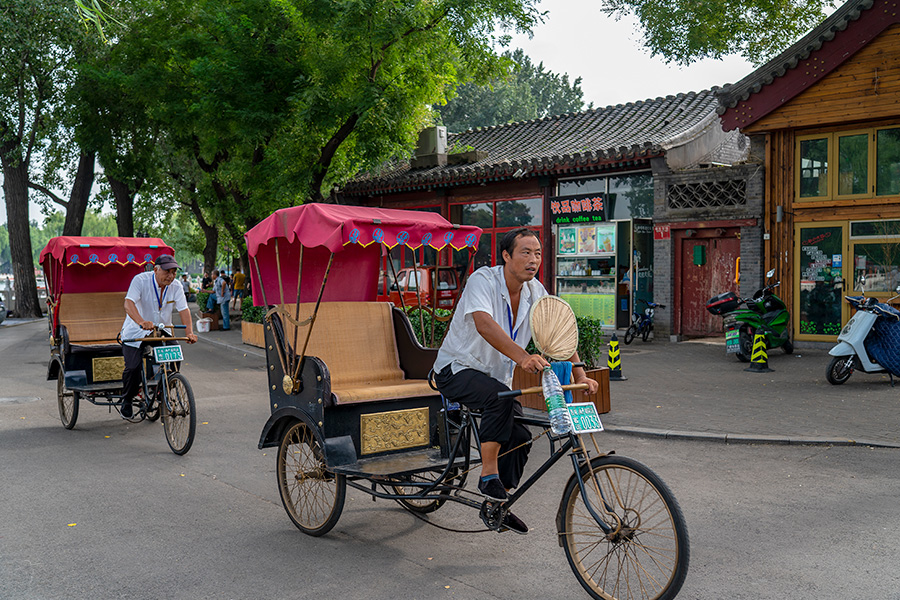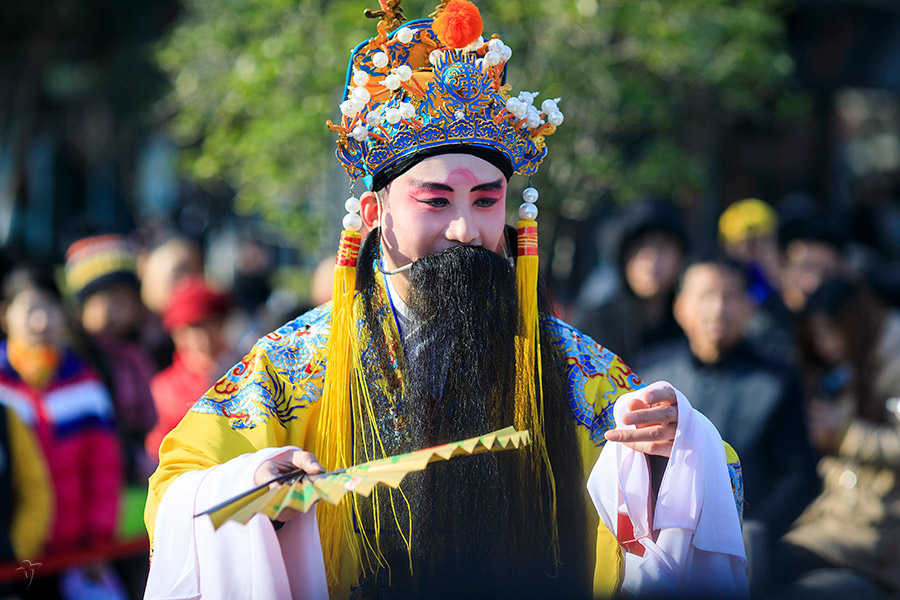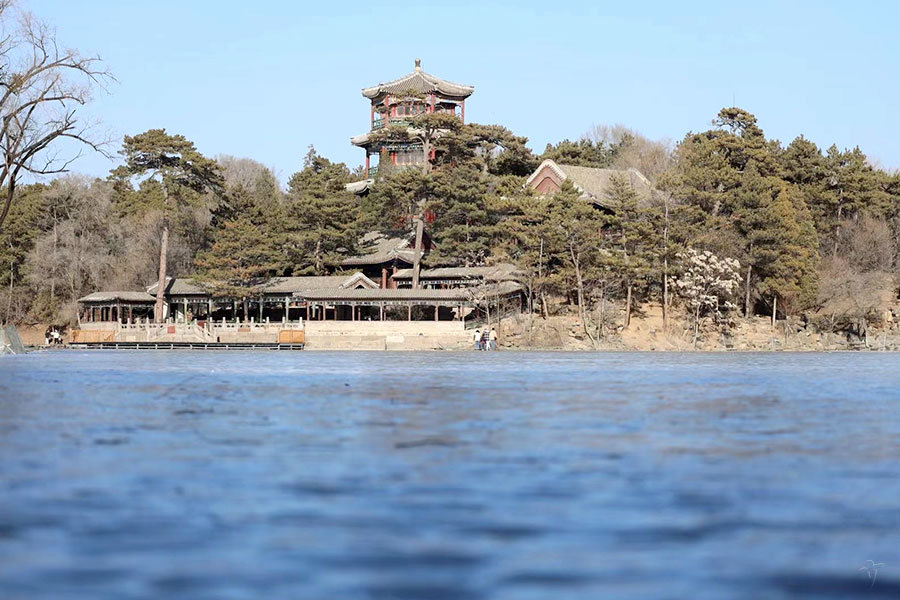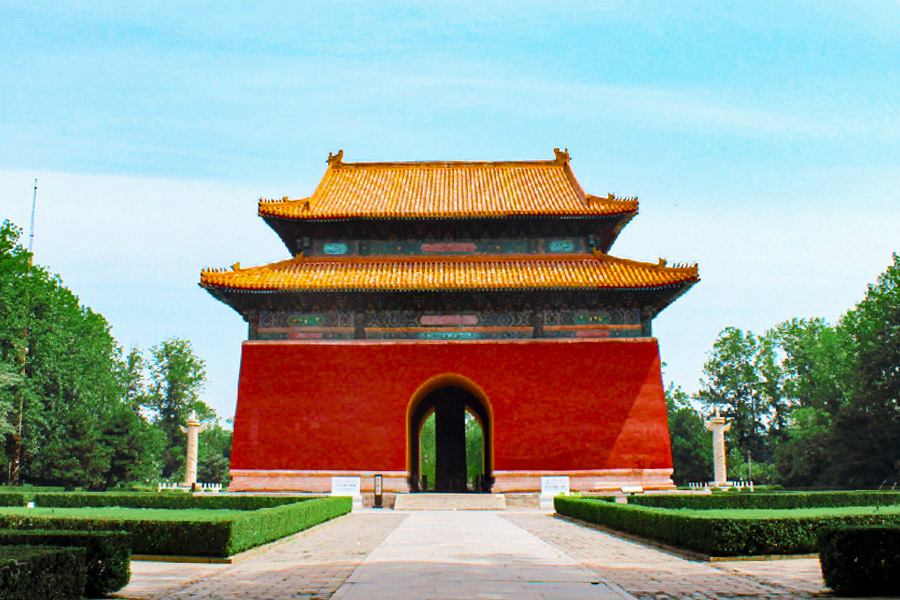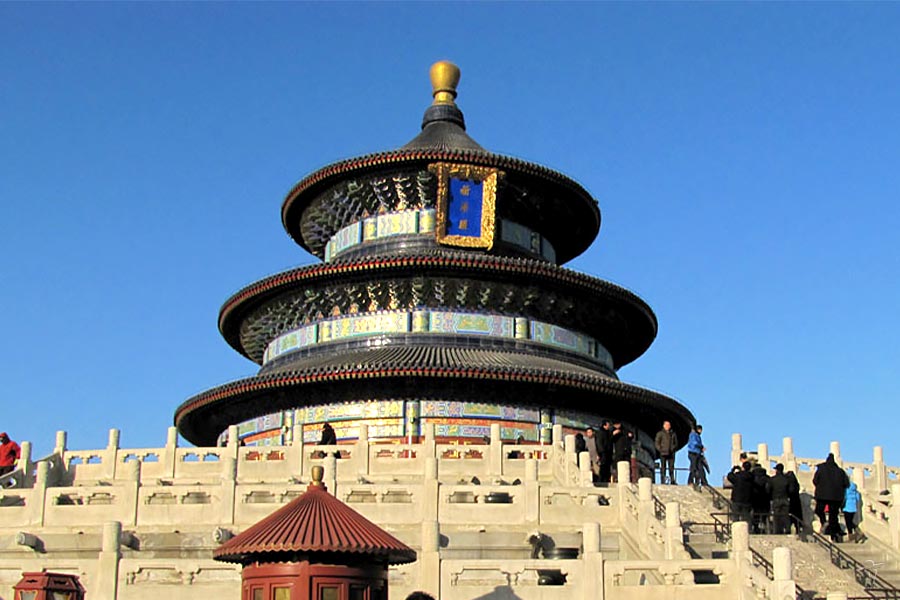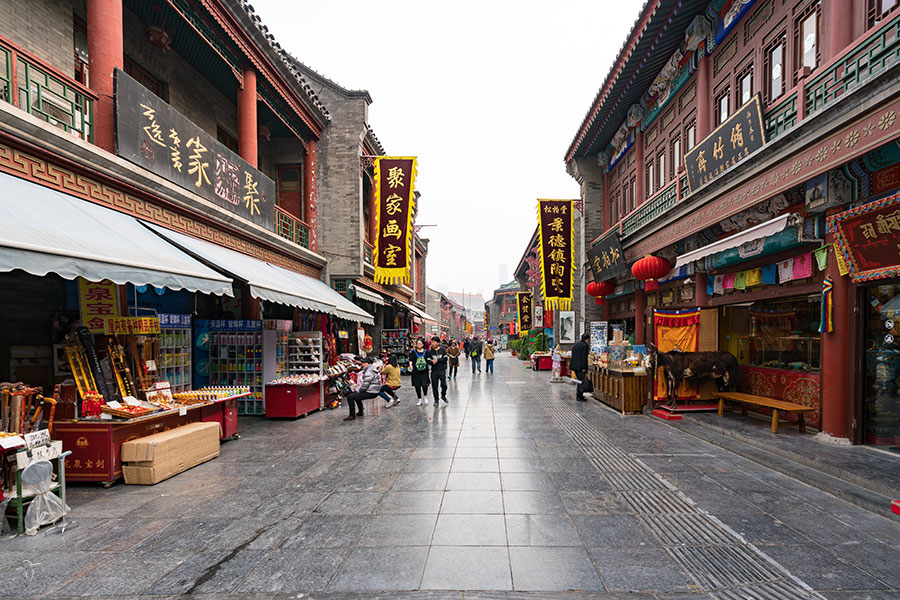Beihai Park
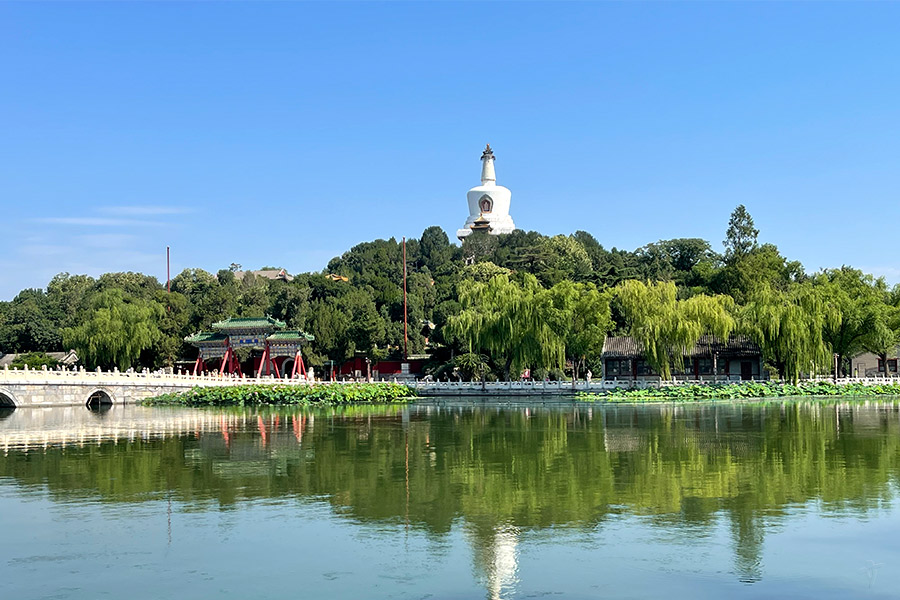
Chinese name: 北海公园 (Beihai Gongyuan).
Location: No.1, Wenjin Street, Xicheng District, Beijing City.
Tickets:
- Admission fee to the park: 10 CNY / person (April-October), 5 CNY / person (November-March of next year);
- Ticket of Qiongdao Island: 10 CNY / person;
- Ticket of Circular City: 1 CNY / person.
Opening time:
- November to March of neat year: 06:30-20:00 (ticket sale stop at 19:30);
- April, May, September, October: 06:00-21:00 (ticket sale stop at 20:30);
- June, July, and August: 06:00-22:00 (ticket sale stop at 21:30).
How to get there:
- To the park's South Gate or Southwest Gate: take bus No.5, 101, 103, 109, 124, 685, 614 or 619 and debus at Bei Hai Gong Yuan Zhan (北海公园站);
- To the park's East Gate: take bus No.5 or 609 and debus at Xi Ban Qiao Zhan (西板桥站);
- To the park's North Gate: take bus No. 13, 42, 107, 111, 118, 609, 701 or 623 and debus at Bei Hai Gong Yuan Zhan (北海公园站).
Travel tips:
1. Both Chinese and English-speaking guides are available (including at weekend and holidays), but reservation of guides should be made one day in advance;
2. The service time of guides beginning from 09:00 and stops at 16:00.
Introduction to Beihai Park
With a history of almost one thousand years, the Beihai Park located in the center of Beijing City is one of the oldest and well-preserved imperial gardens existing in China at present.
The Beihai (literally "north sea") Lake after which the park is named sits on the western side of Jing Mountain and the northwestern side of the Forbidden City and meets the Shichahai Lake in the north. The lake is known together with the Zhonghai (literally "middle sea") Lake and the Nanhai (literally "south sea") Lake as "Three Seas" in Beijing.
The original construction of Beihai Park can be traced back to Liao Dynasty (907-1125). Base on that, the Taining Palace was built in1179 during the Liao Dynasty (907-1125). In 1267, Kublai (1215-1294), the founder of Jin Dynasty (1271-1368), decided to construct the capital city Dadu (in Beijing today) centering on the Qionghua Island, which made the island and its surrounding lake a part of the imperial city of Jin and afterwards became the "Western Garden" of the imperial family of Ming Dynasty (1368-1644); meanwhile, the Ming also expanded the water area southwards and formed the distribution of the "Three Seas".
After exclusive to imperial families for some ten centuries, this imperial garden was finally opened to the public as a park, which is known as Beihai Park under national protection today.
What to visit at Beihai Park?
Comprising about 390,000 m2 water area and 320,000 m2 land area, Beihai Park centers on the Beihai Lake is made up of four sightseeing areas, namely, the North Shore, the East Shore, the Qiongdao Island, and the Circular City.
1. The North Shore
- Small Western Paradise
This pavilion was built from 1768 to 1770 ordered by the Emperor Qianlong of Qing Dynasty (1644-1911) for offering birthday congratulations and praying for his mother, Empress Dowager Xiaosheng. With an area of 1200 m2topping among all the square pavilions in China, it was exquisitely decorated with the handwriting of the emperor.
- Iron-like Screen Wall
It is a screen wall carved during Yuan Dynasty (1271-1368) from a neutral volcanic block, 3.56 meters in length and 1.89 meters in height. The block appears to be the color of iron, hence the name. This wall was placed at an old temple at the very beginning but was moved to the Desheng Temple inside the Desheng Gate. In 1947 the screen was transferred to Beihai Park and its base was not founded and combined with the body again until 1986.
- Nine Dragons Screen Wall
5.96 meters in height, 1.6 meters in thickness and 25.52 meters in length, this screen wall made in 1756 was at first a part of an old temple. Both sides of the wall were paved with colored glazes, on which there are 635 dragons in total. Among the existing three ancient nine dragons screen walls in China, it is this one that has dragons on both sides.
- Xi Tian Fan Jing
Also called "Great Western Paradise", it is one of the best-known zones of Beihai Park, neighboring the Jingxin Study and the Great Yuanjingzhi Hall. The original one built in 1756 had been burnt down in a fire in 1919; after Beihai Park was opened in 1925 the site was used as a public stadium; in 180s, it re re-constructed and opened to the public.
- Jingxin Sduty
It was a common structure before Emperor Qianlong of Qing Dynasty (1644-1911) decided to make it the studying room of the crown prince in 1757. There is also pavilion, tea-leaves baking room, painting room, stone bridge as well some other structures here.
- Kuaixuetang Calligraphy Museum
It was built in 1775 with two halls in its courtyard. The structures was connected by painted verandas, on the eastern and western sides of which over 100 pieces of handwritings of 20 calligrapher living between the forth to the fourteenth century are showed.
- Five Dragons Pavilions
The components of the five are, namely, the Longze Pavilion in the middle, the Yongrui Pavilion and the Fucui Pavilion on the left, and the Chengxiang Pavilion and the Zixiang Pavilion on the right. Built in 1602, these pavilions were the place where emperors, queens and high-level officials fished and spent their spare time.
2. The East Shore
- Hao Pu Jian
This is a lesser garden inside Beihai Park and was also a leisure area of empeors and queens. Emperor Qianlong once feted his officials at this garden.
- Hua Fang Zhai
This site centers on a boat-like structure, with some other attached complex around. It is an independent courtyard where Emperor Qianlong, Emperor Guangxv and Empress Dowager Cixi had ever accessed.
- Xian Chan Tan
Constructed in 1742 with an area of 17,000 m2, this place is where queens and imperial concubines offered sacrifices to the God of Silkworm, praying for good harvest. It is among the most famous nine ancient altars in Beijing as well as one that is well-preserved.
3. Qiongdao Island
- Yong'an Bridge
It is the ligament connecting the Qiongdao Island and the Circular City; at both ends of the bridge there are an archway respectively.
- Yong'an Temple
This temple was constructed in 1651 at the southern foot of the Mt. White Tower, ordered by Emperor Shunzhi upon the request of the Lama of Tibet. There are six main buildings and one white tower here, with the Zhengjue Temple as the entrance of the mountain. At the eighteenth century, several other complexes were added near the temple.
- Qiongdao Chunyin Stele
Set up in 1751 with Emperor Qianlong's handwriting and poem, it is one of the "Eight Famous Landscapes" in Beijing during Jin Dynasty (1115-1234).
- Yuegu Building
The vertical view of the building looks like an oval structure, but in fact it comprising two semi-circle parts. On the walls inside the building inlay 495 pieces of ancient stone carvings.
- Tong Xian Cheng Lu Pan
This is a 6.6-meter-high bronze male statue standing at a carved white marble pillar, lifting a plate over his head. According to records, Emperor Hanwudi of Western Han Dynasty (206BC-24AD) once placed a bronze male statue who lifted a plate over his head at the palace, which was believed the dews gathering in the plate was beneficial for immortality. However, Emperor Qianlong of Qing Dynasty (1644-1911) erected this statue here not for collecting dews but for ornamenting.
- Zhizhu Hall
The hall was constructed in 1751 at the Half Moon City, with five archways scattering around.
4. Circular City
- Circular City
This is a small island in the middle of the Taiye Pool. It was once part of the Daning Palace of Jin Dynasty (1115-1234), with a circular 4.6-meter-high "city wall" protecting the island. The island has an area of 4500 m2 only, but the palaces and temples on it were magnificent.
- Chenggaung Hall
The hall is the main structure of Circular City. It was first named Yitian Hall in Yuan Dynasty (1271-1368) and was rebuilt with its current name in 1690.
- Yu Weng (Jade Urn)
Made in 1265, the urn is also called "Du Shan Da Yu Hai 渎山大玉海", with a oval mouth, 0.7 meter in height, 3500 kg in weight. The surface of it is carved with life-like sea animals. It was placed at Guanghan Hall in Yuan Dynasty (1271-1368) but got lost after the hall collapsed in Ming Dynasty (1368-1644). Dramatically, it came into people's sight once again in 1745 and Emperor Qianlong ordered to buy out it, constructing a pavilion for storing the urn.
- Zhe Yin Hou
This is a Chinese pine said to be planted over 800 years ago. It has grown up over 20 meters today. It earned fame for once being the shelter of Emperor Qianlong on a hot summer day.
- General White Rope
This is not a people but a Pinus bungeana (white-cortexed pine) said to be planted in Jin Dynasty (1115-1234). It was titled the name by Emperor Qianlong.
Beijing tours
Quick Questions
Our team is waiting for your questions. Please feel free to ask us any questions you might have about our China package tours, Chinese culture, or the sites available. We will gladly help you with any special needs you might have and all questions, like our trip designing is completely free of charge.



